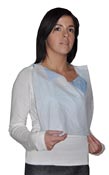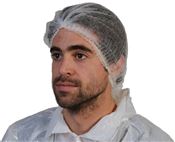-
Home
- Individual protection - clothes shoes
- Individual protection
Individual protection
Personal protection (PPE) for personnel: a major challenge!
Regulation EU2016/425
PPE Personal Protective Equipment is a device or means intended to be worn or held by a person in order to protect him against one or more risks likely to threaten his health or safety.
European regulation 2016/425 deals with the obligations of manufacturers of Personal Protective Equipment.
General CE requirements
- Ergonomics, Safety of PPE (materials, health, etc.), Comfort and efficiency factor (adaptation to morphology, lightness, solidity, etc.), Technical instructions for PPE
CE common requirements
- Adjustments, aging, rapid intervention...
Requirements specific to particular risks CE
- Slips, falls from heights, heat, cold, radiation...
Notified bodies: independent and notified by the State.
They validate the products tested according to the standards, if they exist, for European standards.
They check that the PPE passes the required performance tests, but also check the marking of the product and the packaging according to the requirements, the content of the manufacturer's technical instructions, the implementation of a quality system to control the PPE of category 3.
Several manufacturers may have the same notified body number. Each notified body has its own number and can audit several manufacturers.
What does the EU regulation say?
EU Regulation 2016/425 of March 9, 2016 defines the categories of PPE in its appendix 1:
PPE category 1 Minor risks
PPE category 2 Intermediate risks
PPE category 3 Mortal risks, irreversible damage
Clearance

-15%
Disposable visitor coat hood package 200
115,30 € HT
98,00 € HT
Ref : 888273

-42%
Disposable Dental Bib special package 1250
161,00 € HT
94,10 € HT
Ref : 20927

-21%
Kolmi Microporous Disposable Gown
3,75 € HT
2,95 € HT
Ref : 40507
Top Selling Personal Protection

-100%
Disposable white polypro gown without pocket
0,80 € HT
0,80 € HT
Ref : 888255

-100%
Charlotte disposable white food 100
1,99 € HT
1,99 € HT
Ref : 888249

-100%
Disposable coveralls type 4 5 and 6 cat III EN14126
3,95 € HT
3,95 € HT
Ref : 40070

-100%
Disposable blouse with zip closure and inside pocket
1,35 € HT
1,35 € HT
Ref : 40632
Choose fromindividual protection
Focus on
EU Regulation 2017/745 personal protective equipment
European Directive 93/42 relating to medical devices has given way since May 2021 to Regulation (EU) 2017/745
common for all member states.
• The reasons for a change
European Directive 93/42/EEC is a regulatory text drafted by the European Union, applied since 1993, giving common indications concerning the marketing of medical devices. This directive, applicable to all member states of the European Union, has been enriched by other directives for nearly 25 years. Each of these directives has been transposed into the legislation of each Member State of the European Union. This leaves free rein to the interpretation of each Member State, concerning the obligations of placing medical devices on the market.
The European Parliament voted in April 2017 the implementation of a new text aimed at unifying all the actors of the medical device under a single regulation, more complete according to the current technological context.
The purpose of this new regulation is to improve traceability and transparency at European level, but also to be able to monitor notified bodies more closely. The regulation on medical devices entered into force on May 26, 2017, and has been applied since May 26, 2021.
This transition must be applied by companies but also by notified bodies. What changes for PPE?
The regulation modifies the scope of medical devices, considerably strengthens their evaluation criteria and procedures , as well as the responsibilities of the various players.
? reinforced procedures: the regulation is no longer transposed into the health code of each country of the European Union but must be applied as it stands. This makes it possible to avoid disparities between the different notified bodies and Member States in terms of the requirements to be complied with.
? improved monitoring - EUDAMED: Among the notable changes, a new post-certification monitoring system is implemented from May 26, 2021 in order to identify each medical device according to its own code called "UDI" (Unique Device Identification). All of this data is listed in the new European database called EUDAMED.
This "serial number" specific to each medical device will allow very precise traceability.
This new feature will be very useful during recalls of certain devices and in particular in order to assess as quickly as possible the number of people affected by the incident.
? clinical assessments: A more precise framework for clinical assessments and investigations for MDs before they are placed on the market. Personal protection for medical devices
Medical devices are divided into four classes according to their level of risk :
- Class I Low degree of risk
- Class IIa Medium degree of risk
- Class IIb High risk potential
- Class III Very serious risk potential
The rules to be followed to determine the class of the MD are set out in Annex VIII of Regulation 2017/745 and take into account the duration of use, the invasive character or not and the type of invasiveness, the possibility or not of reuse , the therapeutic or diagnostic aim and the part of the body concerned. Class I MDs that are non-sterile or have no measuring function are self-certified by the manufacturer. For other devices; the intervention of a notified body is systematic for the CE certification process.